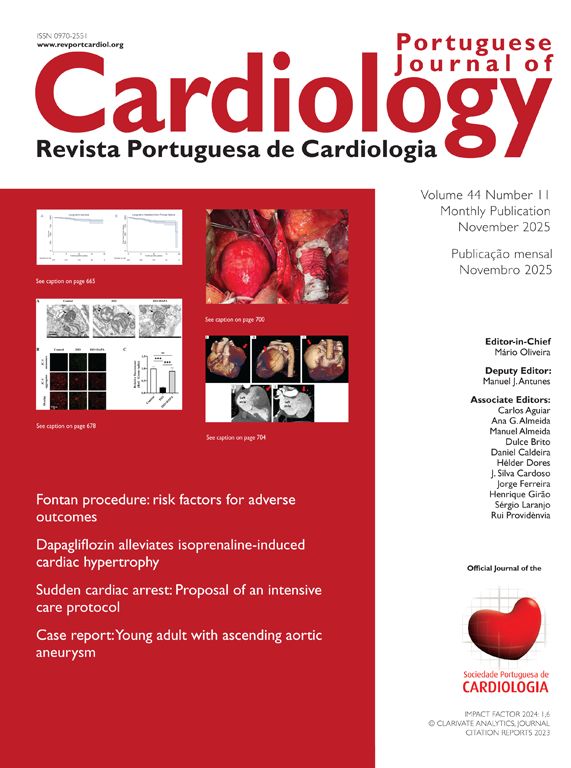Transposition of the great arteries (TGA) is one of the most critical congenital heart defects requiring surgical intervention in newborns. The arterial switch operation (ASO) has become the standard treatment, offering improved long-term survival and quality of life. However, the success of ASO largely depends on the precise anatomical understanding of coronary artery origins, semilunar valve morphology, and their spatial relationships.1–3
Among the factors that can complicate ASO, commissural malalignment (CM) has gained attention due to its potential impact on coronary artery transfer. CM refers to the rotational misalignment of semilunar valve commissures, which may influence the course and implantation of coronary arteries. Recent studies suggest that CM may be a predictor of coronary artery anomalies (CAAs), which are significant risk factors for surgical morbidity and mortality.4,5
Echocardiography remains the cornerstone for non-invasive preoperative assessment in congenital heart disease. It provides crucial information regarding great artery positioning, coronary artery patterns, and commissural alignment. Despite its significance, the correlation between CM and CAA remains underexplored. In this issue of the Portuguese Journal of Cardiology, Öztürk et al. study the role of echocardiography in detecting CM and its implications in predicting CAAs in newborns with TGA.6,10
Commissural malalignment is characterized by the misalignment of the commissures of the pulmonary and aortic valves. Ideally, these commissures should be symmetrically aligned to facilitate coronary artery transfer during ASO. However, in cases of malalignment, the coronary arteries may originate from abnormal locations or follow an unusual trajectory, increasing the complexity of their reimplantation.
Kim et al. classified CM into four patterns based on semilunar valve rotation: sinus-facing of the pulmonary valve; sinus-facing of the aortic valve; sinus-facing of both valves; bicuspid pulmonary valve (functionally sinus-facing).7
Al Nasef et al. introduced the commissural ratio (C-ratio) as a metric to quantify the severity of CM, by assessing the angular or spatial deviation between the commissures. This ratio measures the distance of both ends of the anterior facing sinuses of the pulmonary valve from the facing commissure of the aortic valve. It is labeled as the D1 and D2 distance. A ratio (C-ratio) of the smaller distance (either D1 or D2, whichever is shorter) over the sum of both D1 and D2 was taken (D1 or D2, whichever is shorter/D1+D2). A higher ratio indicates greater malalignment.8 A higher degree of CM is often associated with a more anteriorly and rightward positioned aorta (D-malposed), which alters coronary artery implantation sites.
Several studies have demonstrated an association between CM and unusual coronary artery patterns. The most common anomaly observed in TGA is the left circumflex artery (LCx) arising from the right coronary artery (RCA) (1L2RCx pattern). Other complex patterns, such as an intramural course, pose additional surgical challenges.7
In a study by Al Nasef et al., a C-ratio >0.31 was associated with an increasing probability of CAA. The odds of an anomaly increased by 13% per 0.01 increase in the C-ratio.4 Similarly, in the current study, a C-ratio of 0.42 was determined as the threshold beyond which the likelihood of CAA significantly increased.8 Bang et al. further reinforced these findings, showing that commissural rotation angles >30° on echocardiography had high sensitivity (80%) and specificity (85%) for predicting CM.3 However, while the commissural rotation angle was useful in detecting CM, it did not independently predict the presence of CAA.5
Echocardiography is indispensable for evaluating the complex anatomy of TGA before ASO. Standard parasternal short-axis views enable visualization of semilunar valve alignment and coronary artery origins. Methods used to assess CM include: commissural rotation angle measurement – the angle between semilunar valve commissures3; and, C-ratio determination – a novel quantitative measure correlating CM severity with the likelihood of CAA. Diagnostic accuracy of echocardiography in this setting as 80% sensitivity, 85% sensitivity and a strong predictive value (0.85).7 Despite these advantages, echocardiography has limitations in patients with poor acoustic windows, and complementary imaging is, such as cardiac CT or intraoperative confirmation, is required.7
Surgeons rely on preoperative imaging to anticipate challenges in coronary artery transfer. The presence of CM influences surgical decision-making with a higher incidence of modified coronary transfer techniques. In the current study, 75% of patients with CM required modified coronary transfer, compared to 45% in the non-CM group.10 CM is also associated with a greater likelihood of coronary torsion or kinking post-ASO, and can lead to coronary stretching or malrotation, increasing the risk of ischemic complications.8,9 These findings emphasize the need for precise preoperative echocardiographic assessment to optimize surgical outcomes.
Understanding the embryological basis of CM may provide insight into its relationship with CAA. During normal heart development, the aortopulmonary septum undergoes spiral rotation, ensuring proper alignment of the great arteries.8 De la Cruz et al. proposed that linear (instead of spiral) development of the aortopulmonary septum leads to TGA, which may also contribute to CM.8 Abnormal migration of neural crest cells and secondary heart field contributions may disrupt semilunar valve rotation and coronary artery placement.9 These embryologic disruptions likely explain why patients with severe CM frequently exhibit unusual coronary artery patterns.
Öztürk E et al. make a significant contribution to the understanding of CM in TGA and its impact on CAAs. Despite some methodological limitations, the study provides strong evidence supporting the use of echocardiography to predict surgical challenges in ASO. The introduction of the C-ratio as a predictive tool is particularly noteworthy.10
To enhance the clinical impact of these findings, future studies should focus on validating the results in larger, multi-center cohorts and incorporating additional imaging techniques. If confirmed, these findings could lead to improved preoperative risk assessment and better surgical outcomes for newborns with TGA.
Conflicts of interestThe author has no conflicts of interest to declare.





